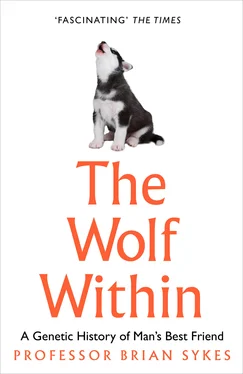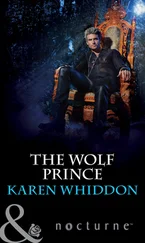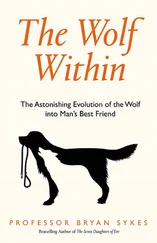Wolves, and therefore dogs, belong to the last of these Orders, the Carnivora . It has become the most diverse of any Order, embracing over 280 species, and it takes its name from the Latin that describes the main characteristic of its members: ‘flesh-eating’. They are the carnivorans, as distinct from the general term ‘carnivores’, which takes in all meat-eating species, be they fish, reptiles or even plants. A major division of the Order Carnivora is the Family Canidae , which includes wolves, coyotes, jackals and foxes. Cats large and small belong to the Family Felidae , bears and pandas to the Ursidae , while badgers, hyenas and seals belong to other, separate, families. Some carnivorans, like the Giant Panda, are strictly vegetarian but are still included within the same Order. It is their teeth that set the Carnivora apart from other mammalian Orders. All have well-developed third incisors, which serve to pierce the flesh of prey animals to prevent escape and to kill, while unique to carnivorans are their fearsome carnassial teeth, taking the place of our molars. Carnassial teeth are razor sharp and self-sharpening and are designed to slice through flesh like a pair of shears rather than merely tearing at it.
The dog-like carnivorans, the Canidae , and the cat-like Felidae began to diverge from each other and become gradually more specialised. As far as we can tell from the fossil record, the earliest canids evolved in North America where the oldest fossil dog, Cynodesmus , was discovered in Nebraska, USA, and lived between 33 and 26 million years ago. At one metre in length, it resembled a modern coyote and, by its dentition, was clearly carnivorous with large canine teeth for grasping and tearing the flesh of its prey. Soon after, on an evolutionary timescale, some truly fearsome carnivores began to evolve, including the bone-crushing Cynarctus . As these monsters became extinct about 11 million years ago they were replaced in turn by other canids, notably Tomarctus , found all over North America from Florida, north to Montana, west to California and south to Panama. From the size of the jaw muscle insertions in their skulls it is clear that Tomarctus had a bite strength far greater than required to kill its prey. This led to the conclusion that, like modern-day hyenas, Tomarctus was able to crush bones to reach the nutritious marrow of scavenged carcasses.
By the middle of the Miocene epoch, some 10 million years ago, the canids had spread from America, first to Asia, then to Europe and finally to Africa. As they did so, the ancestors of today’s wolves gradually evolved towards a lighter, faster frame in order to hunt swift herding prey like elk and wild horse. They hunted not as individuals but as members of a pack. Thus began the key development in the evolution of the modern wolf, and ultimately of the domestic dog. To be effective hunters they developed the ability to communicate with each other and to work as a team. Wolf packs travelled with the herds, following them throughout the year, a habit that our own human ancestors adopted.
5
All our efforts to reconstruct the past can only ever give an approximation of what really happened. Well-preserved fossils are spectacular but rare and their discovery can only ever convey a patchy record. History is notoriously inaccurate, depending on the inclinations of the author. Mythologies require sophisticated interpretation. Genetics is no different. It is just another foggy lens through which we try to make sense of times gone by. Bearing that in mind, let us clean the eyepiece and take another look.
In Chapter 3 we saw how DNA from living dogs and wolves was able to reconstruct a plausible genetic relationship between the two. These were inferences from modern DNA but, astonishingly, DNA can survive for thousands of years in fossil bone and teeth. As we will see later, it is often in a pretty bad state. Nonetheless it does give us the chance to examine ancient sequences directly rather by inference. Later on, we will have a closer look at how ancient DNA has helped us follow the evolution of the dog. But before that we need to know a little more about DNA itself.
All genetics depends on mutation, the ultimate source of all variation. DNA changes over time. When a cell divides, its DNA is copied so that each of the two daughter cells contains the full set of genetic instructions. The copying process is astonishingly precise and accurate, and the error rate is minuscule. Editing mechanisms within each cell scan the copies for errors and correct them. But the error rate is not zero. After each cell division, roughly 1 in 1,000 million mutations gets through uncorrected. If the emerging mutation changes a vital component of a gene, then the daughter cell will either malfunction or die. Only extremely rarely will a mutation be beneficial. The most dangerous malfunctions are those that turn normal cells into malignant ones which lose the capacity to restrain their own cell divisions, and they develop into tumours. That is why in some rare diseases, where the DNA editing and correction capacity of cells is faulty, it leads to much higher rates of malignancy.
Fortunately, the majority of DNA copying errors has no consequences whatsoever; first, because the errors don’t occur in important genes, or, second, because they are not passed to the next generation. Only mutations in the germ line, being the cells that go on to form eggs and sperm, are capable of travelling on through time. Even then, the vast majority of sperm never get to fertilise an egg, and, in mammals, most eggs are not fertilised anyway. For these reasons alone, the overwhelming majority of germ-line mutations which occur through faulty copying, even the most potentially damaging of them, are not passed on.
Some mutations, however, do get through to the next generation. Most will not be noticed and have no significant effect on the body, either because they occur in unimportant genes or in the gaps between genes in the long stretches of DNA whose function, if any, is still largely unknown. Here it is worth distinguishing between genes and the rest of our DNA. Genes do something, usually instructing cells how to make proteins. There will be more on this when we take a look at gene mutations that have been found in dogs, but for now we will concentrate on the inconsequential mutations that have no effect, neither good nor bad. Precisely because they are so inconsequential, these unassuming ‘neutral’ mutations are the lifeblood of the sort of genetic reconstructions of past events that we have covered so far. A damaging mutation in a vital gene will disadvantage the individual who carries it. Not necessarily fatally, of course, but enough to put him or her at a slight reproductive disadvantage and thus reduce the prospects of the mutation being passed on to the next generation. Generally, over time, the mutant gene will be eliminated by selection, though not always, as we shall see in pedigree dogs. However, the humble and meaningless mutations that have no effect on anything of great importance will escape the scrutiny of selection and will sail on unmolested through future generations. It is these humble mutations that are the guiding lights that illuminate the history written in the language of the genes.
To explain how mutations are used, in dogs and humans, to date past events like the timing of the transformation from wolf to dog, let us imagine a desert island in the middle of a vast ocean. A young couple arrives in a canoe. For our purposes, it could equally well be a couple of shipwrecked dogs. The island is a paradise, with plentiful fresh water in bubbling streams flowing down from high mountains in the interior. There are coconut palms, shellfish and crabs in the sea and no predators or dangerous animals to disturb the idyll. Everything needed for life is on hand, and the couple start a family. Their children grow up in this cradle of abundance and, ignoring incest taboos for the sake of this exercise, have children with their siblings.
Читать дальше












